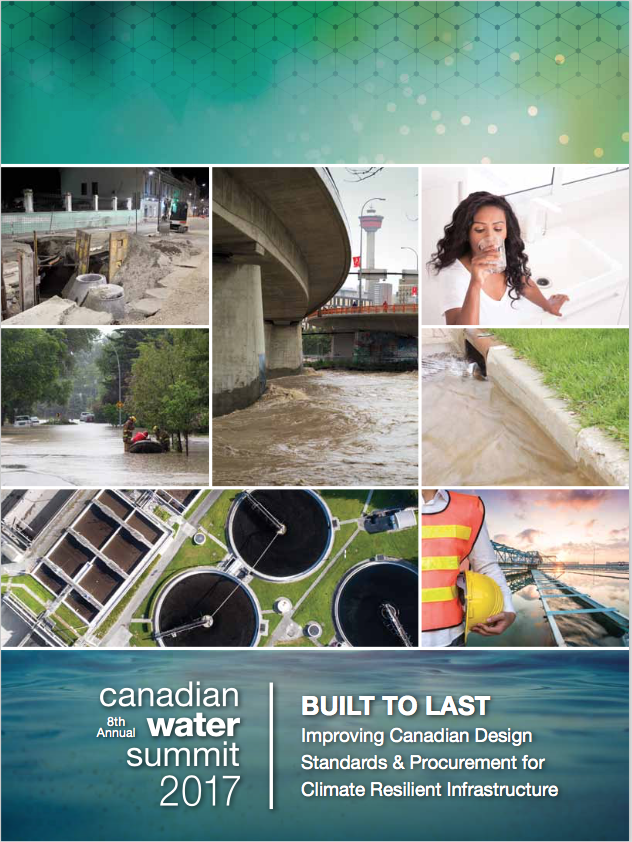Much of Canada’s water infrastructure has been in place for many years. Infrastructure designs and associated procurement processes are based on existing climate patterns. With the effects of a changing climate, there is recognition that these designs need to be revisited to improve resiliency, safety, and protection for Canadians. Accordingly, procurement processes must be adapted to facilitate the needs of the future.
On June 22, 2017, Water Canada and nine of Canada’s leading water associations and organizations convened during the Canadian Water Summit to discuss how design standards and procurement policies could be improved to facilitate climate resilience. During two sessions, the leaders presented tangible recommendations in support of commitments to the Paris climate agreement to participants of the Water Summit. Summit goers also contributed their ideas in breakout groups focused on specific measures to enhance procurement policies and processes, and infrastructure design protocols.
A summary of the recommendations is available in a newly released report, Built to Last: Improving Canadian Design Standards & Procurement for Climate Resilient Infrastructure.
Several cross-cutting themes emerged:
- The need to maximize the impact of investment in infrastructure given scarce funding realities, pressing water infrastructure needs, and a growing gap to meet those needs;
- Approaches to design protocols and procurement processes need to incorporate climate change resiliency objectives. There is support for outcome-based design protocols and procurement processes that take into account the life-cycle of infrastructure while paying attention to the local context.
- More data granularity is necessary to better target capital and operational expenditure in water infrastructure, and better support water decision-making.
- Education and training are crucial in ensuring a successful integration of resiliency objectives across the water sector.


The measures detailed in the report range from broad national policy recommendations to specific technical ones. For instance, one breakout group focused on the reuse of native fill in backfill trench excavation, while another explored ways to reach a ‘safe to fail’ approach to design protocols. The report delves into ways to modernize the National Master Specification and minimize the timeframe for granting environmental approvals.
Irene Hassas, who participated as a representative with the Ontario Environment Industry Association (ONEIA) said, “It was an excellent collaborative effort by Water Canada, bringing different cleantech and water organizations together to harmonize activities, support the development of effective policies, and help our economy grow and create more jobs.”
Built to Last: Improving Canadian Design Standards & Procurement for Climate Resilient Infrastructure is available here.
The 2018 Canadian Water Summit will take place in Vancouver, June 20-22. We will continue the discussion with Canada’s leading water associations and all those interested to participate.










